restoring a vintage old standby
Am restoring my dads vintage old standby. And I figured out how to remove the pesky nails. by using a flush cutter by gently griping them and pulling the nails out. The harmonica was in bad shape to start out. And my dad carried in his pocket when he was a truck driver. And some time over the years it got damaged. And he had Scott tape holding together one side. But when I got the nails out I noticed that one of the slots on the wooden comb was broke in the back.
And my dad gave me permission to fix it any way I want since I play harmonicas. And what I was wanting to do was get a new comb but replace all the nails with screws. So what I was wanting to now what size screws does the marine band deluxe/cross over use to hold the reed plate to the comb? And what size screws does the marine band deluxe/cross over use to hold down the cover plates? And what size drill taps would I need?
Great photos.
Notice the striations imprinted on the inside mating surfaces of both reed plates. This was the result of imperfections (grooves) left behind from poor manufacturing process. Back in the day, comb makers were not concerned about "air tightness", and used coarse blades to cut the blocks of pearwood into harmonica combs (with little finish sanding). Nowadays, comb manufactures would consider your comb defective and toss it into the trash ;o)
[A] If your goal is:
to restore this vintage harp for show, you would want to glue the broken tine back into place.
[B] If your goal is:
to actually play the harmonica (why not, the reeds look perfect), I would advise you simply find a donor comb from a retired Hohner harmonica. Your choices are: Marine Band 1896, Marine Band Deluxe, Crossover, or even the new Thunderbird. Your Standby reed plates will fit well onto these combs. If you insist on repurposing the original comb, you should sand the comb surfaces ultra flat and smoother than a baby's bottom. For the mouthpiece , it would be wise to remove the sharp corners of the tines, making your harmonica more comfortable to play.
The coverplates are pretty well mangled, and will require extensive hammer (use teflon, polyurethane head) work on top of a PVC surface (self healing cutting board) and/or hardwood block surfaces. For repairing the radius of the cover plates (mouthpiece), I would recommend using a 1/2" round wooden dowel (cut to length) to fit inside the curvature of the leading edge of the cover plates. This will become your "round" anvil to gently hammer your radius back into form. And finally, take your plates to a chrome shop and have them put a chrome finish onto the coverplates. Plan B would be to purchase a Hohner Standby on eBay and repurpose the coverplates ;o)
This will be a labor of love. If tinkering is not your thing, I strongly recommend you reconsider restoring this harmonica. If it is your thing, depending on your skill level, be prepared to invest 16-24 hours of your free time--keep us posted!
Your Harpsmith, Kinya
Hello
The most economical and readily available choices for your reed plates and cover plates are machine screws. Available in brass, steel, stainless steel, and a wide variety of heads; such as Pan, Round, Hex, Filster, straight slot, phillips, etc:
- 0-80 x 3/8" (I personally like this diameter, because it closer resembles the diameter of the original Hohner nails)
- 1-72 x 3/8"
- 2-56 x 3/8"
DRAW PLATE thread options:
- 0-80 tap requires 3/64"pilot hole
- 1-72 tap requires #53 pilot hole
- 2-56 tap requires #51 pilot hole
Your photos revealed significant rust damage to the cover plates. So much so, I believe that no matter how hard you try to eradicate the "cancer", it will reappear in short order.
You sound like an extremely determined guy though, so try the Happich Semi-Chrome Polish and see if it will spruce up your plates a bit. If not ...
Earlier I recommended having a chrome shop do their magic on your plates. Another viable solution would be to have the plates sand blasted, then powdered coated with your favorite color.
* You should be able to locate everything with a few google searches ;o)
Your Harpsmith, Kinya

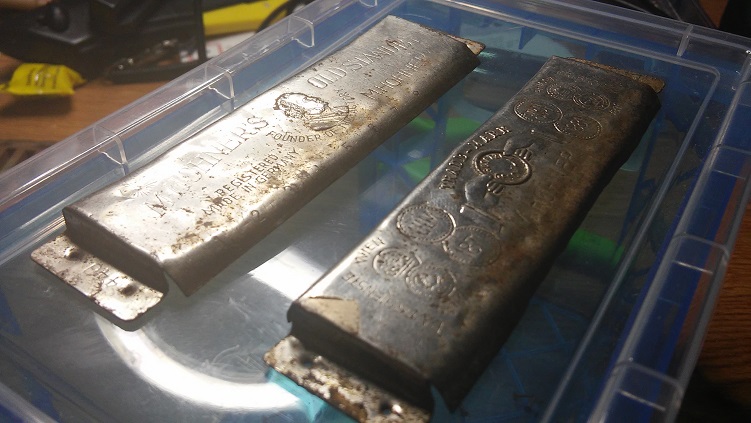
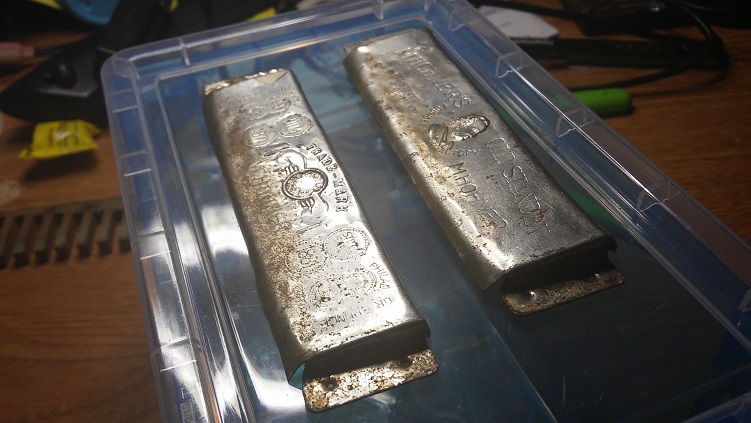
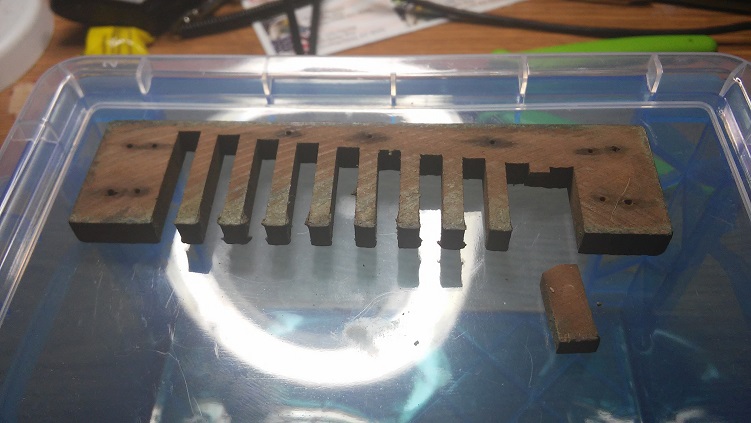
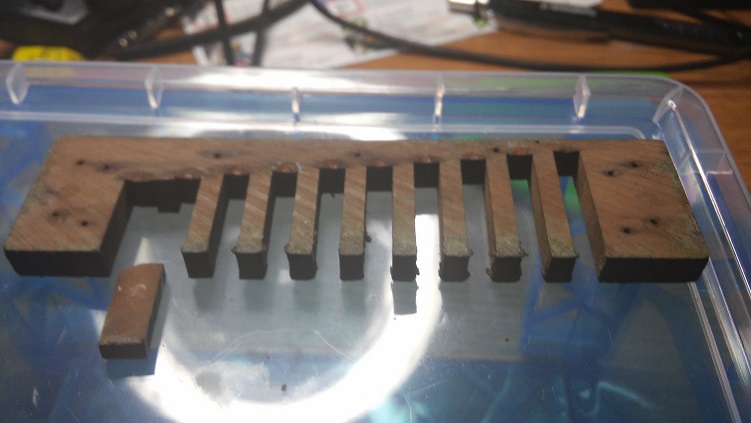
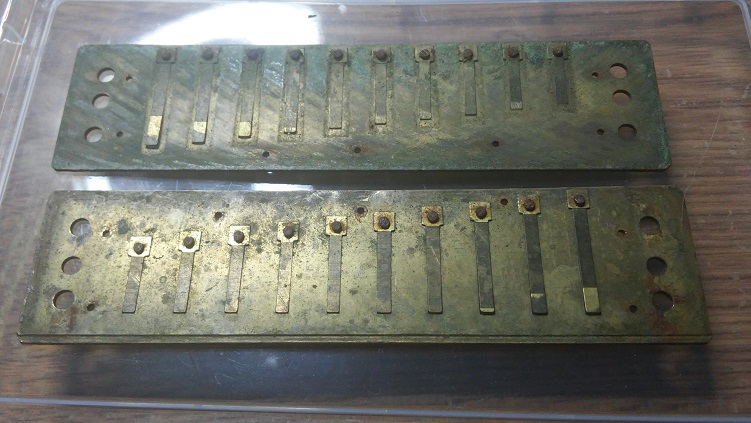
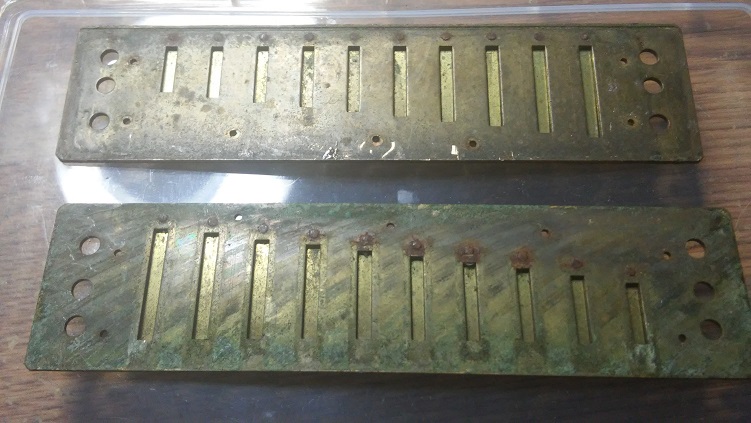
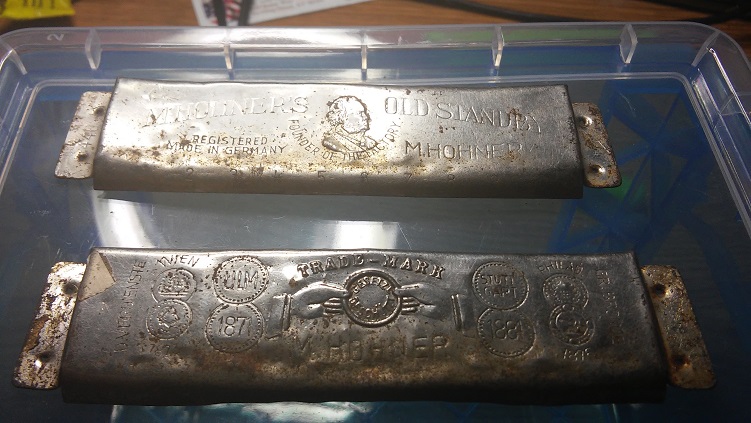
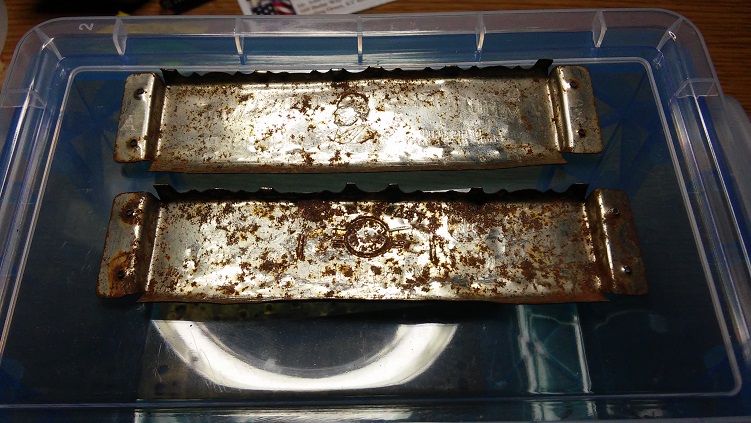

Hello JF, prepare your self for a "labor of love" project.
So I can best advise you on the process, do me a favor and send us pictures of your dismantled Standby harmonica.
Your Harpsmith, Kinya